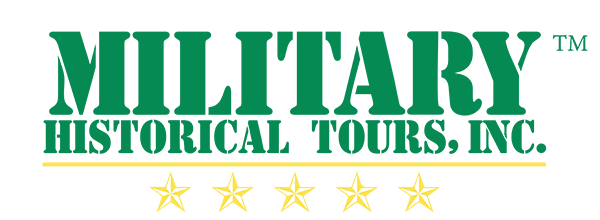Blog 12/16/21 - A Marine Hero & A Bell Return
Editor’s Note: The MHT Blog previously reported on the return of three large shrine bells to Okinawa https://miltours.com/index.php?route=information/information&information_id=98 and also the story of three church bells returned to the Philippines in our post The Three Bells of Balangiga by MHT’s good friend Rear Admiral Daniel W. McKinnon, Jr., SC, U.S. Navy (Ret) https://miltours.com/index.php?route=information/information&information_id=91
Ring the Bell Proudly: A Marine Hero and a Bells Return to Okinawa.
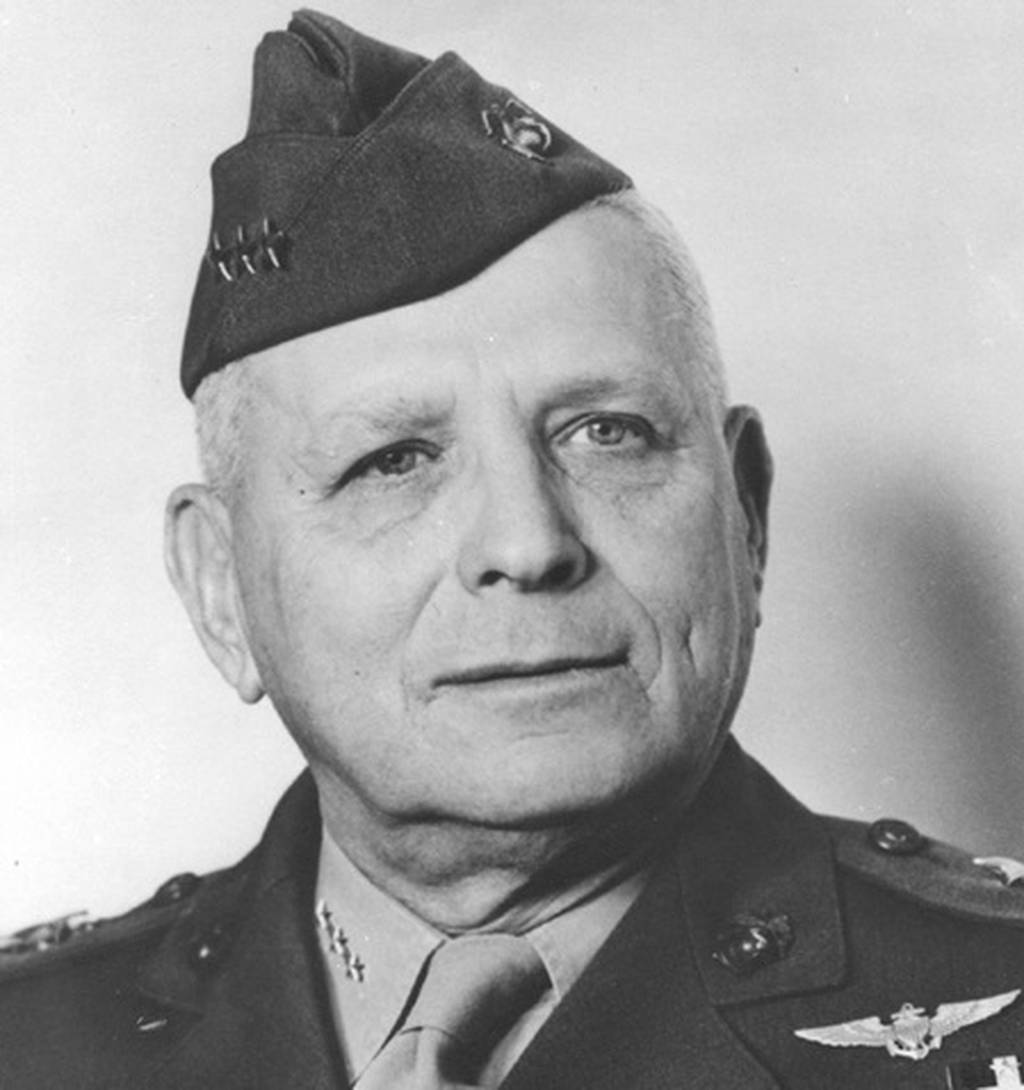
“Thickset, poker-faced, chill-eyed General Geiger is another Marine’s Marine.” Time Magazine, October 1944
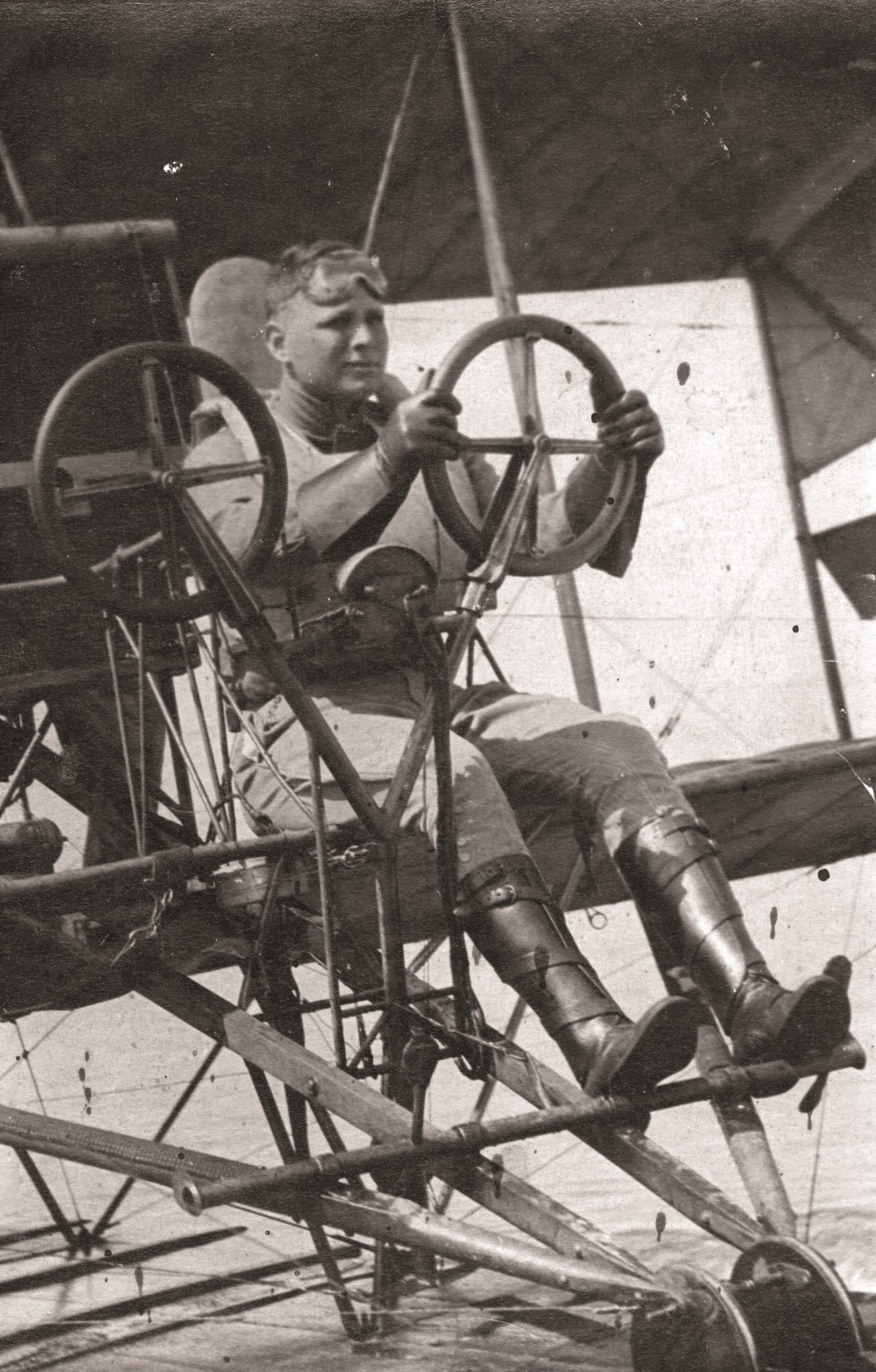
In March 1916, 1stLt Roy S. Geiger, USMC reported from the Marine Detachment Peking, China to the Naval Aeronautic Station, Pensacola, FL, as a student naval aviator. He successfully completed the course and was designated the 49th naval aviator in June 1917. He was the fifth Marine Corps Aviator to receive his wings on June 9, 1917. During World War I, Geiger arrived in France in July 1918 serving with 5 Group, Royal Air Force at Dunkirk.
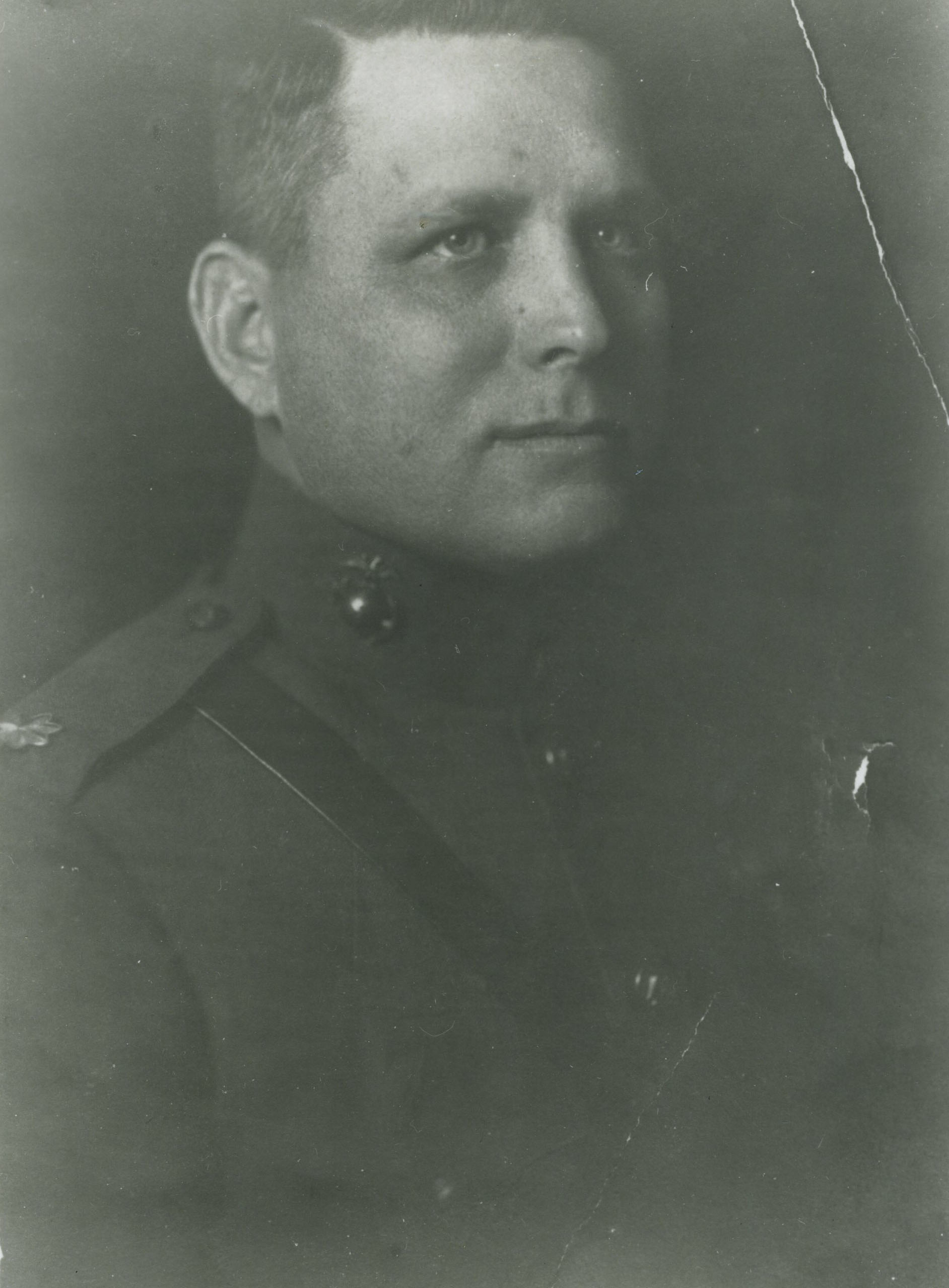
As a temporary Major, he commanded 7th Squadron of the First Marine Aviation Force and was attached to the Day Wing, Northern Bombing Group where he was awarded the Navy Cross for his distinguished service in leading bombing raids against Imperial German targets.
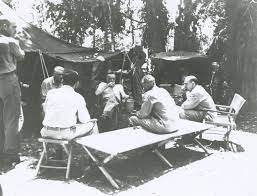
On September 3, 1942, BGen Geiger arrived on Guadalcanal in command of the 1st Marine Aircraft Wing but was in charge of the Cactus Air Force (CAF) and commander of the combined Army, Navy and Marine aircraft stationed at Henderson Field. He was awarded a Gold Star in lieu of a second Navy Cross for his service during the Guadalcanal Campaign. He was the first of only two Marines to receive the Navy Cross in both World Wars. The other John J. Nagazyna, USMC matched the feat as a Gunnery Sergeant with 1st Bn, 6th Marines at Belleau Wood & as a Sergeant Major with 3rd Bn, 22nd Marines on Eniwetok. Geiger was acutely aware of the importance of supporting Marines on the ground as when USMC Commandant Holcomb and 1st Marine Division’s Commanding General Vandegrift flew to Noumea, New Caledonia to brief Admiral Halsey. That day the Imperial Japanese Army (IJA) kicked off their last offense against the Henderson Field perimeter on 23–26 October. Geiger ably supported MajGen Rupertus, USMC, the Assistant Division Commander against Japanese air attacks against Henderson’s CAF and naval bombardment of the beachhead.
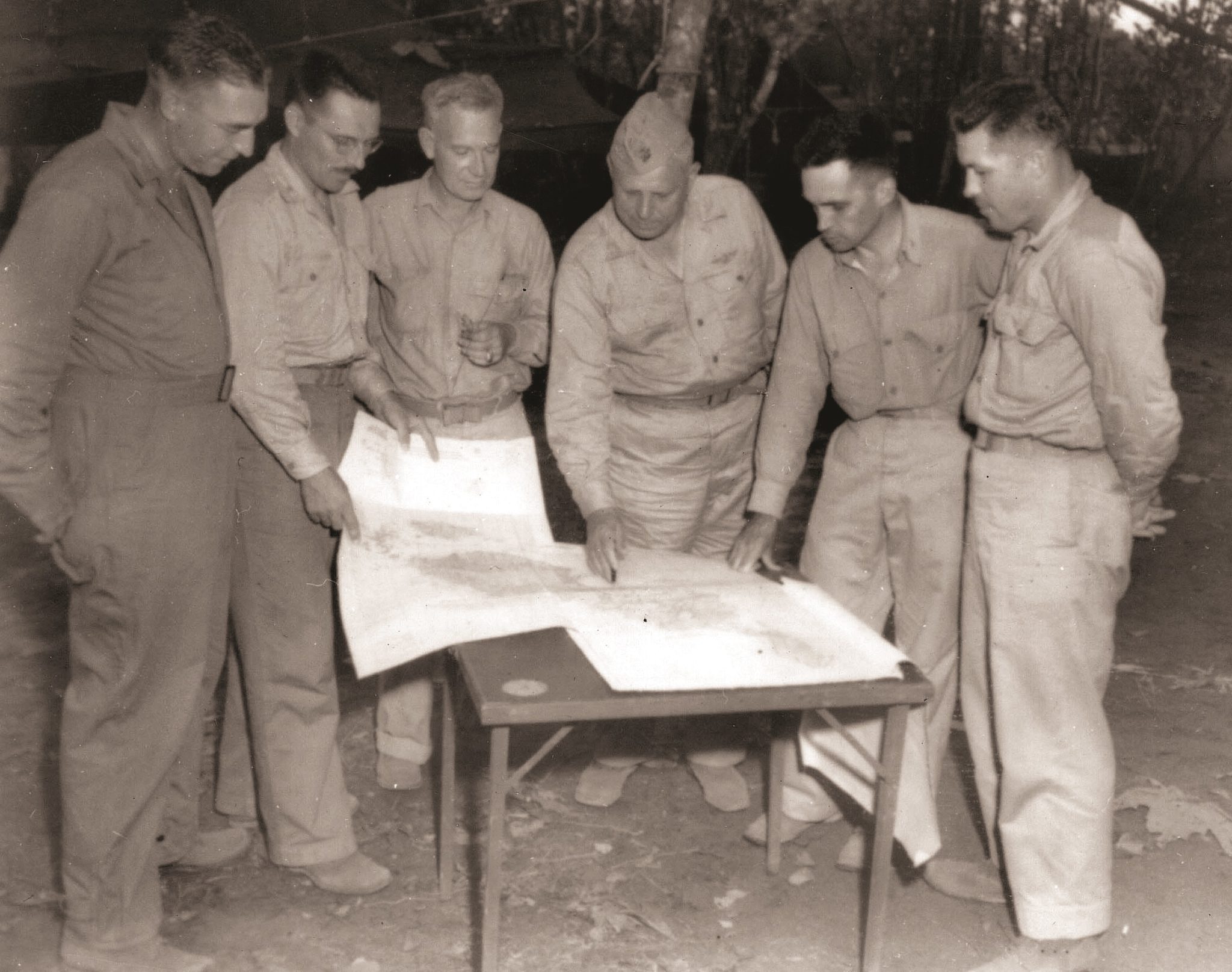
In November 1943, promoted to MajGen, Geiger returned to the Pacific as Commanding General I Amphibious Corps and led the corps from November 9, to December 15, 1943, in the Battle of Bougainville, for which he was awarded the Distinguished Service Medal.
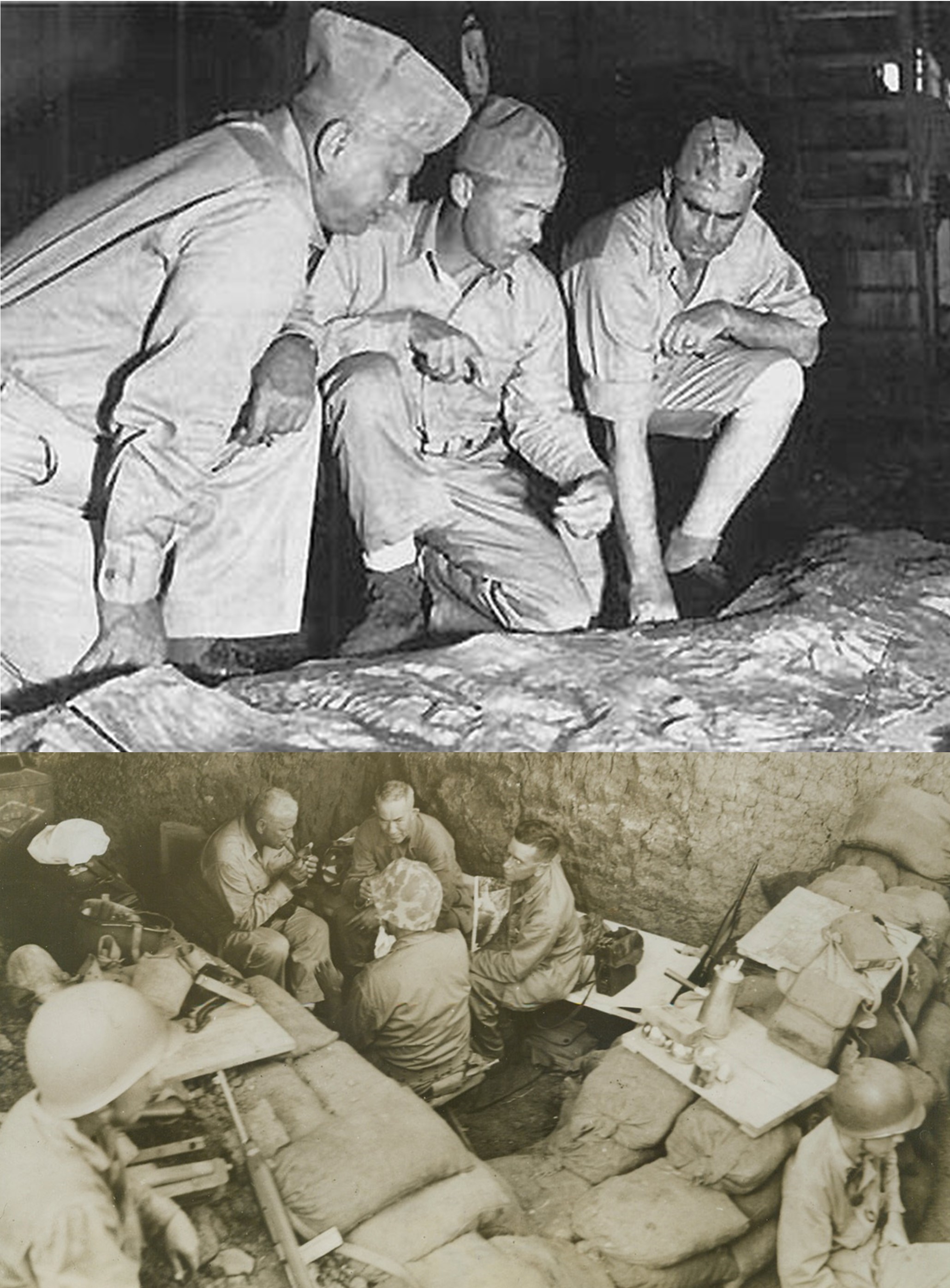
Redesignated III Amphibious Corps (III AC) in April 1944, he led this command in the invasion and subsequent liberation of Guam during July and August 1944, and in the difficult assault on Peleliu in the Palau Islands in September and October. For those operations he was awarded two Gold Stars in lieu of a second and third Distinguished Service Medal.
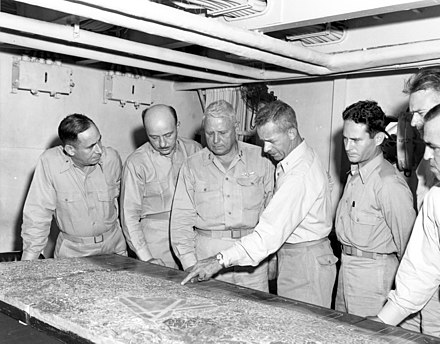
Geiger led his three-division III AC into action for the fourth time as part of LTG Simon Bolivar Buckner Jr.’s Tenth Army along with MajGen John Hodge’s XXIV Army Corps in the invasion and capture of Okinawa. The three had all served together in the Pacific and held each other in high regard.

LTG Buckner’s regard for Geiger was so high that he designated him as his successor in command of Tenth Army should he himself become a casualty. The three commanders made a good team and worked closely together throughout the planning phase.
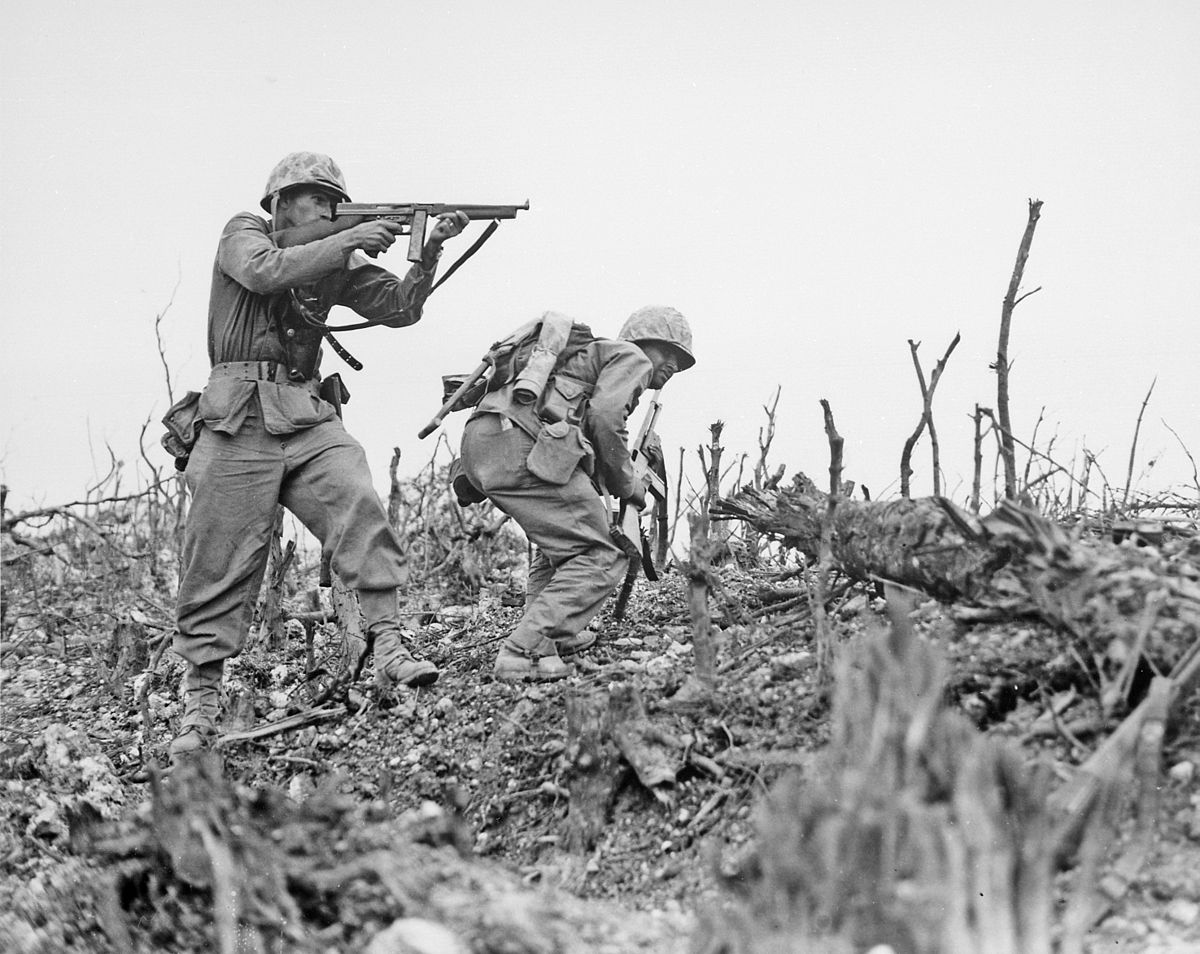
Okinawa’s Typhoon of Steel was the bloodiest battle of the Pacific War. The most complete tally of KIA names at the Okinawa Prefectural Peace Memorial Museum lists 240,931 names, including 149,193 Okinawan civilians, 77,166 Imperial Japanese soldiers and sailors, 14,009 American soldiers, sailors & Marines, and smaller numbers of people from Korea (447), the United Kingdom (82) and Taiwan (34.) 90% of Okinawan buildings were destroyed, along with countless historical documents, artifacts, and cultural treasures, and the landscape had become a vast field of bodies, mud, lead, rubble and maggots. As the staging area for the invasion of Japan, the Imperial Japanese Navy (IJN) and Army made the island a killing zone with the Okinawans, who the Japanese considered racial inferior and as little more than slaves as they did their other nation neighbors, caught between the two clashing armies. The IJA not only starved the Okinawans but used them as human shields, slave labor and as the battle was lost forced or directed them to commit suicide. Civilians were urged to commit mass suicides being handed grenades by the IJA to blow themselves up.
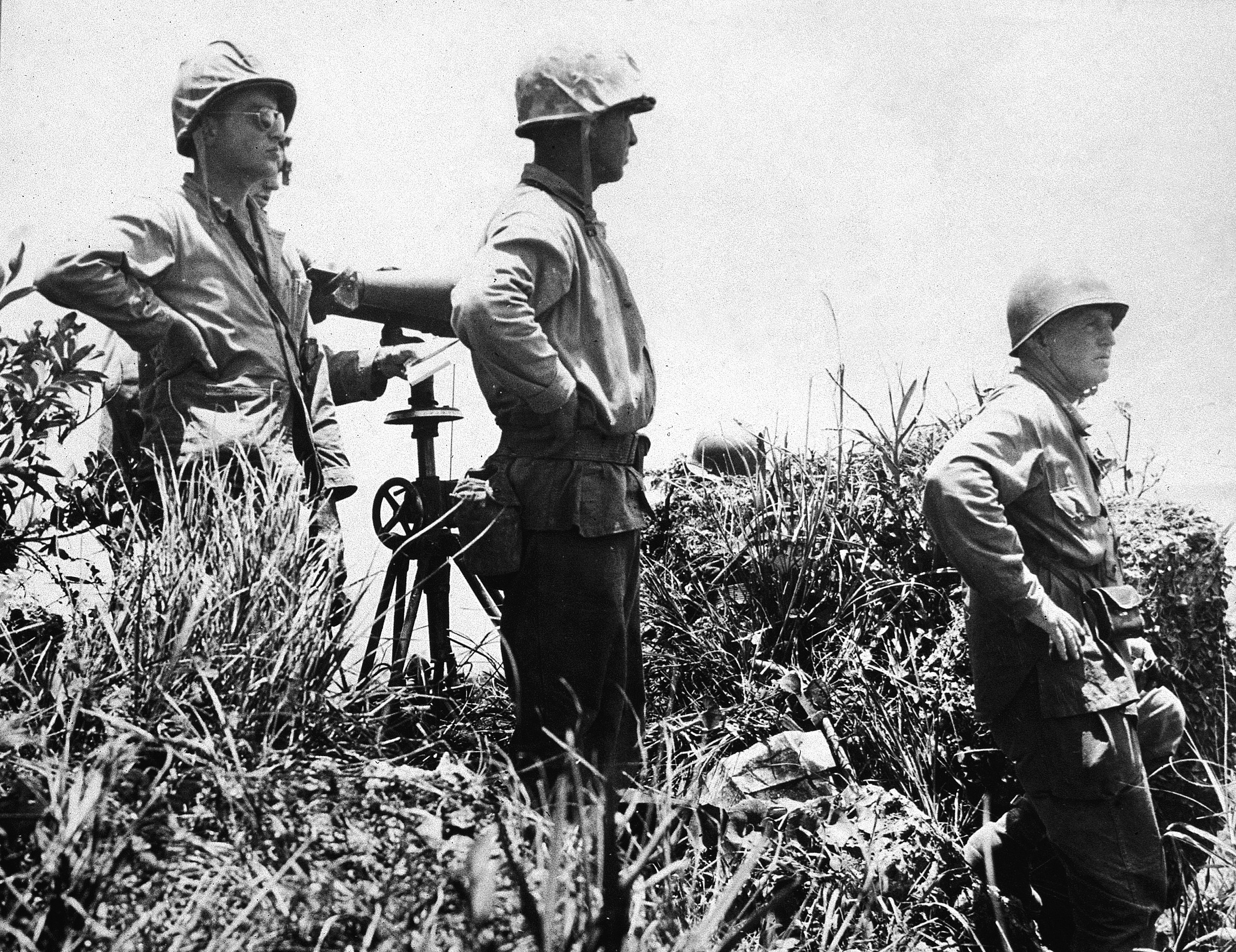
On June 18, with 9,000 IJN dead from battle and mass suicides in the port city of Naha the shattered IJA was pushed back into the southmost corner of the island. LtGen Buckner was at an observation post of the newly arrived 8th Marine Regiment from Geiger’s 2nd Marine Division. The command group were seen by a sharp-eyed Japanese artillery forward observer who immediately called for fire that fatally wounded Buckner by an artillery round.
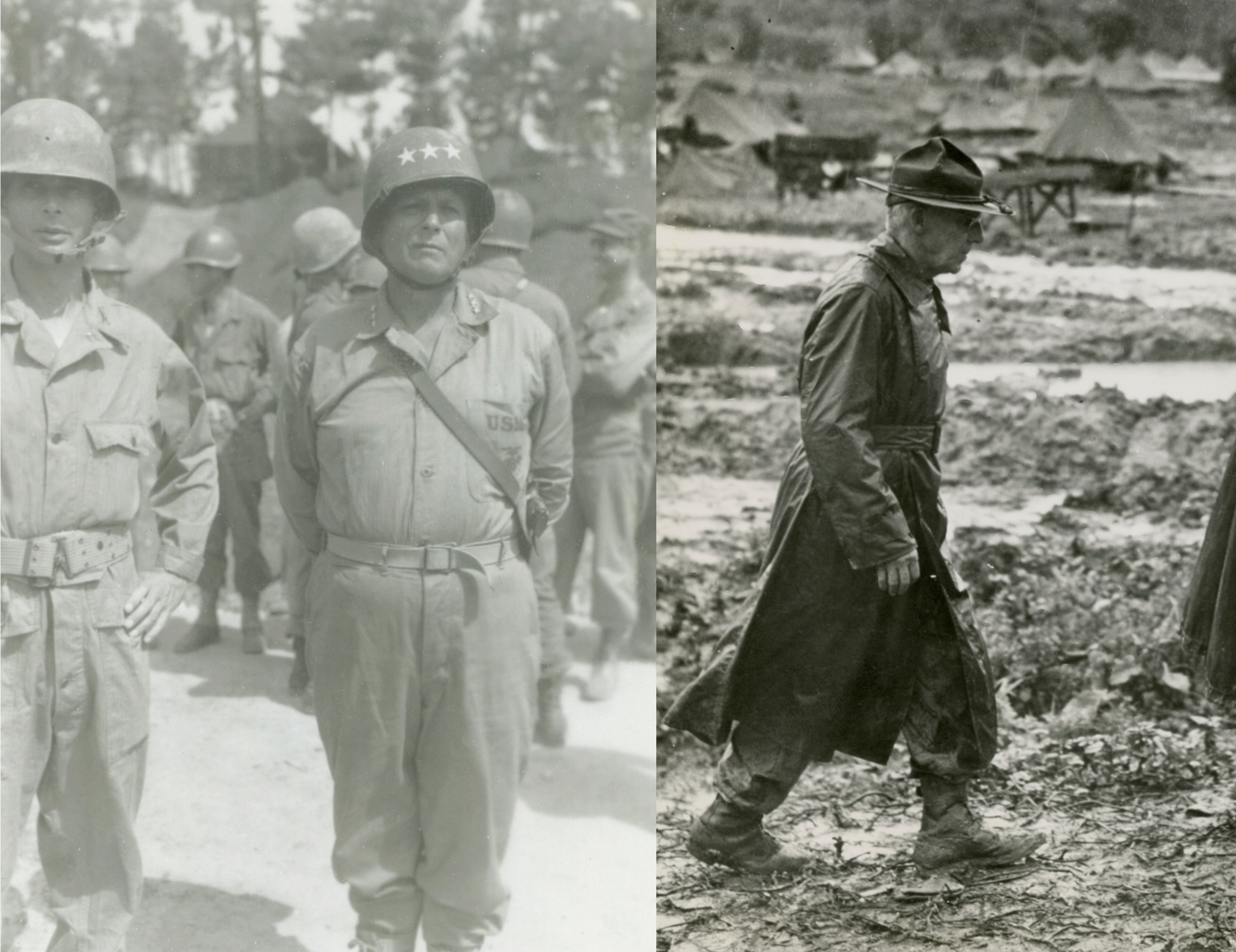
In accordance with Buckner’s directive, Geiger assumed command of Tenth Army, making him to this day, the first and only Marine to command a field army. The following day, Geiger was promoted to the rank of lieutenant general, making him also the Marine Corps’ senior aviation officer. Geiger finished the job for the final three days before the IJA’s collapse and was relieved by General Joseph Stilwell. Many of the Japanese troops that survived past the American declaration of Okinawa being secure fought on ferociously. During "mop-up" operations, another 8,975 Japanese were KIA. Only 7,455 Japanese surrendered. He was presented with a small temple bell by local Okinawans before his departure for Hawaii
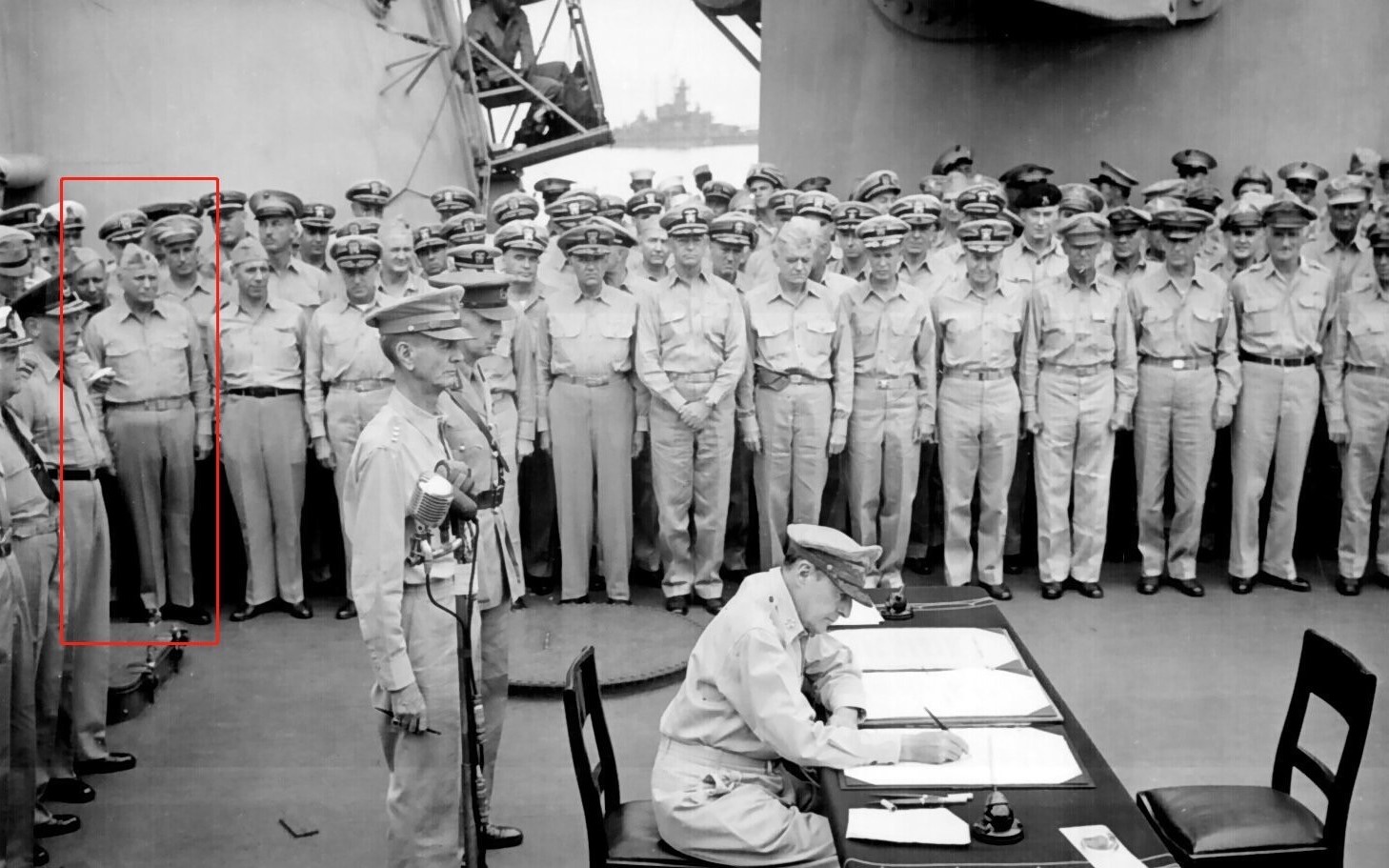
Geiger was appointed Commanding General of the Fleet Marine Force, Pacific in July 1945 and represented the Marine Corps in Tokyo Harbor for the Empire of Japan’s surrender aboard the USS Missouri (BB-63) on September 2, 1945.
He returned to Washington, D.C., being transferred to Headquarters, U.S. Marine Corps in November 1946. Throughout 1946, Geiger had been plagued by an increasingly deep and ever more painful cough. On Nov. 15, 1946, he turned over the command of FMF PAC and departed for HQMC to prepare for his retirement, but fate intervened. Ever aware of his worsening condition, he entered the National Naval Medical Center at Bethesda, MD. In the presence of his wife and family, Geiger died quietly of lung cancer on Jan. 23, 1947. By a special act of Congress, he was posthumously promoted to the rank of General, only the second Marine to wear four stars.
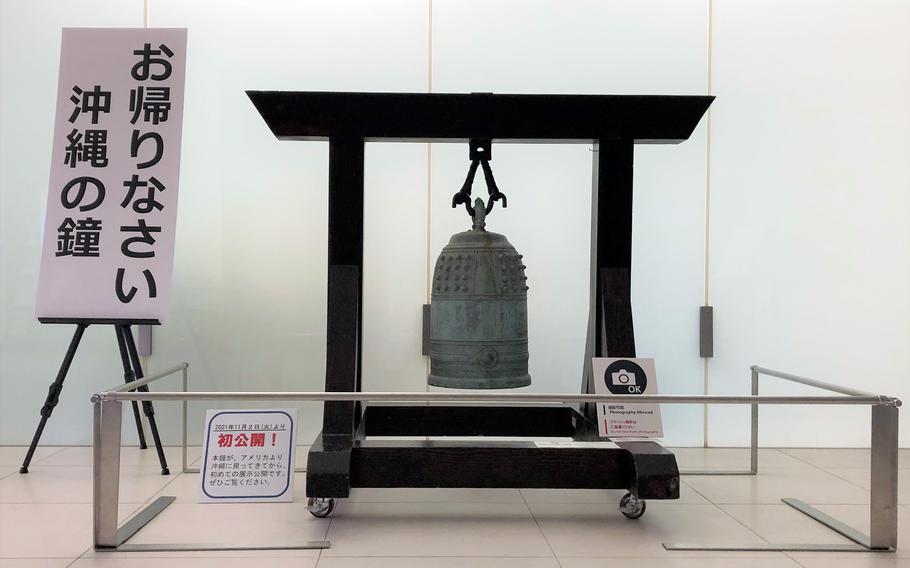
The bell stands 26 inches tall, weighs 88 pounds and is decorated with Buddhist symbols. Atop the bell is a double-headed dragon handle loop. The upper third of the bell is covered with dots, giving it the appearance of the Buddha’s head. Geiger returned to Pensacola in 1946 with the bell and it was installed at his home and generations of Geiger children remember hearing the bell as a directive to return home from the beach for dinner.
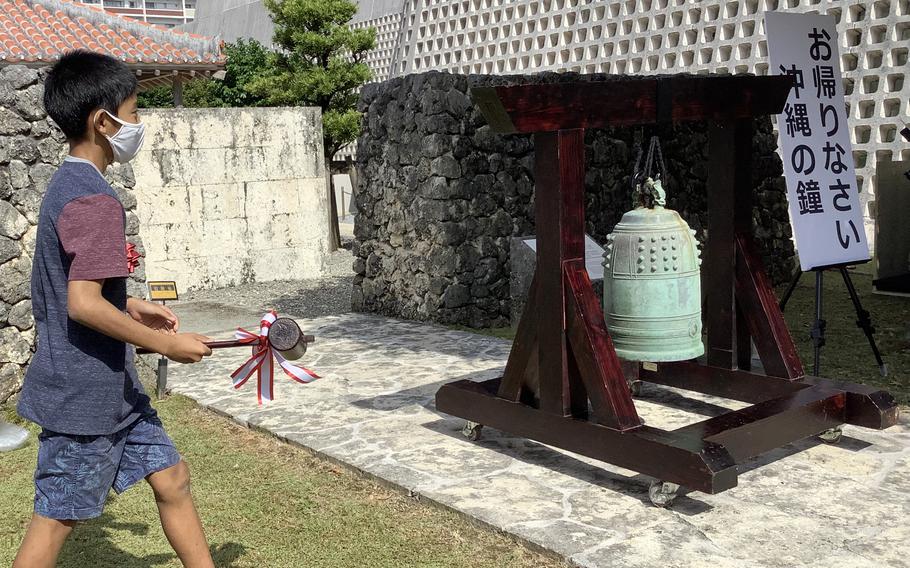
As Geiger’s granddaughter, Melanie Curtis, prepared to move to a new home earlier this year, she began to contemplate the best plan of action for the bell's placement and existence. The decision came much easier this time around as she had denied the return request in 2014. "Over time, I've thought about it and I truly believe it needs to go back to the Okinawan people," Curtis said. Curtis agreed to its repatriation and partnered with Alex Kishaba, president of the Japanese nonprofit organization Ryukyu America Historical Research Society in Okinawa and liaison and former U.S. Navy pilot Jeff Schneider to prepare for the bell's crating and shipping details to Okinawa. The bell headed for the Okinawa Prefectural Museum & Art Museum after an online ceremony last summer in Pensacola between the Curtis family and Kishaba.
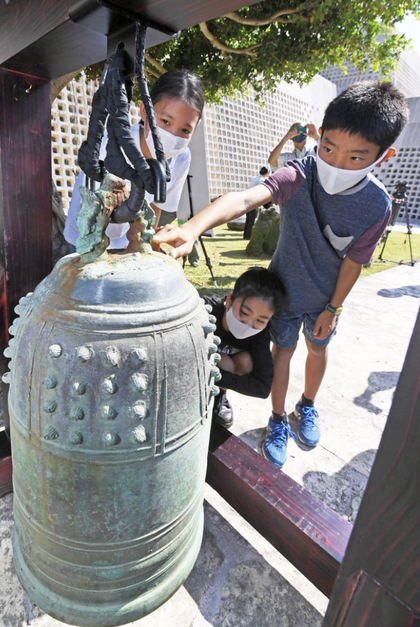
The handles curving at the head of the bell are dragons, the symbol of Okinawa that adorn castles throughout the island. The round spheres dotting the seafoam-colored bell align with the previous returned bells in Okinawan Museums and temples. Kishaba defined it as a "secondary bell" that was rung to notify the Okinawan people, whether about waking time at 7 a.m. or in the case of approaching opposition forces, such as that in the Battle of Okinawa. He said, “the bell is a missing link to our (Okinawan) history, it's a chain to our legacy. For the sake of our children, they need to know their history and that's what museums are for in the first place.”
However, this bell lacks the ingrained writings that usually tell Okinawan history and stories. It is without the date of casting, where it was made or for who. It is far less significant than the Shuri Bell, the Admiral Perry/US Naval Academy and the 6th Marine Division/VMI Bells returns previously reported in the MHT Blog https://miltours.com/index.php?route=information/information&information_id=98 Those bells had real cultural significance and unfolded part of Okinawa's history and practice of Buddhist ideals. Hopefully this one will not meet the lack of attention that some of those received.
